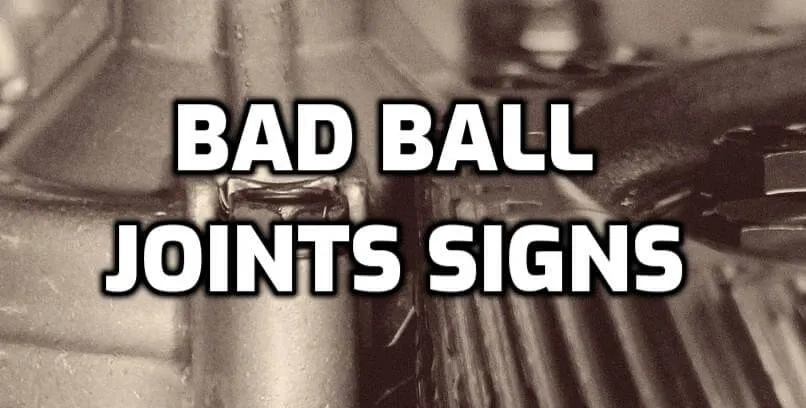The Easy Way to Check Ball Joints

Ball joints are an important component of vehicles. They allow the body to pivot and turn while also keeping the wheels aligned with the vehicle’s frame. If they are not working properly, it can affect steering, braking, and even gas mileage.
The good news is that there’s a quick way to test ball joints for wear and tear without having to take your car into a shop. You just need some basic tools that you probably already have in your garage or toolbox!
Take The Car For A Drive
On a public roadway, reach the top speed limit and listen for noises emanating from the suspension. Ball joints that are worn will make a constant banging noise that appears to be coming from one of the vehicle’s corners. Take note of any odd sensations in the steering wheel. Ball joints that are worn may produce excessive vibration in the steering wheel and cause the vehicle to wander, necessitating constant correction from the driver.
Check the wheel alignment.
A car with worn ball joints will exhibit uneven tire wear and may pull to one side on its own during braking or acceleration. As you drive, make a note of how the vehicle handles on corners and sharp turns. If your car is pulling severely in either direction, it could indicate that something needs to be adjusted at the ball joints.
Drive Over Speed Bumps And Potholes
Speed bumps and potholes can be an indication of suspension wear, even if you don’t hear any noises. If your car is not performing well over speed bumps or potholes, there could be a problem with the ball joints. Newer vehicles may also have sensors that pick up on issues with the vehicle’s suspension.
If you have an electronic system that informs you of issues with your vehicle, the sensor may pick up on problems in the suspension and indicate if there is a need for ball joint replacement or repair.
Turn The Steering Wheel
Turn the vehicle’s wheels back and forth a few times, paying close attention to any signs of looseness in the ball joints. Loose ball joints will cause a knocking sound and can even make the steering wheel shake. If your ball joints are worn, you may notice that one side of the vehicle is lower than it should be or that one corner leans in more than others when turning. This can indicate an issue with alignment as well as ball joint wear and tear.
Manual Checking
Look under the car to see if the ball joints are greasy, cracked or broken. The lower joint is subjected to more stress and typically wears out first. Check to see if the rubber boots on the joints are still intact. If they’ve been damaged or disappeared, it’s a sign that the joint should be replaced.
Check for slop in the joint by trying to move it up and down manually. There should be minimal movement with a new joint, but an old one will have a play that can even make noise when shaken around slightly. If you notice grease on your tires after driving the car, it may mean the ball joints are worn and need to be replaced.
What Happens When Ball Joints Go Out?
The ball joints are part of the steering mechanism. When your car’s front end is not aligned properly, that can indicate that something isn’t right with your ball joint or control arm. If you see this kind of issue happening to your vehicle, get it checked out by a professional mechanic as soon as possible so there aren’t any bigger problems later on.
When one or both ball joints go out, your steering wheel will be misaligned and may pull to the left or right while you’re driving. As it turns out, checking ball joints doesn’t have to be difficult at all! By following these simple steps, even those without any automotive knowledge can determine if their car needs ball joint replacement.
Frequently Asked Questions (FAQ)
If you’re concerned that your ball joints might be going bad, there are a few things you can do to check.
First, try to wiggle the tire back and forth while someone else holds the vehicle steady. If there’s excessive play in the joint, that’s a sign that it’s starting to wear out.
Another way to check is to jack up the car and take a look at the joint itself. If it’s cracked or damaged in any way, that’s another indication that it needs to be replaced.
Of course, if you’re unsure or don’t feel comfortable doing these checks yourself, you can always take it to a mechanic or dealership for a professional opinion.
Related Article
